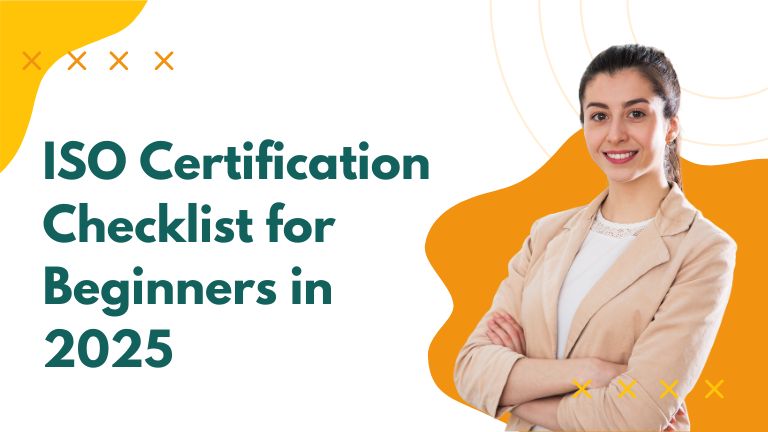Achieving ISO certification can seem overwhelming for newcomers, but
with the right strategy, the process becomes manageable and rewarding. The ISO
Certification Checklist for Beginners simplifies this journey, ensuring
that businesses adhere to international standards efficiently. Whether you're a
startup or an established company, this checklist will guide you through the
essential steps for a successful ISO certification process.
Step 1: Understand ISO Certification Requirements
Before starting the certification process, it's crucial to understand
the basics of ISO standards. The most common ISO standards include:
- ISO
9001 (Quality Management System)
- ISO
14001 (Environmental Management System)
- ISO
45001 (Occupational Health & Safety)
- ISO
27001 (Information Security Management)
Identify the ISO standard that aligns with your business objectives and
customer requirements.
Step 2: Perform a Gap Analysis
Conducting a gap analysis helps determine the difference between your
current processes and the ISO standard's requirements. This analysis allows you
to:
- Identify
areas that need improvement.
- Develop
an action plan to bridge these gaps.
- Allocate
resources effectively to address deficiencies.
Step 3: Develop a Detailed Implementation Plan
A well-structured plan is essential for achieving ISO certification. The
plan should include:
- Clear
objectives and timelines.
- Assigned
roles and responsibilities for key personnel.
- Defined
processes for documentation and training.
Step 4: Document Your Processes
ISO certification heavily emphasizes proper documentation. Your
documentation should include:
- Quality
Manual: Outlines your organization’s processes, objectives, and policies.
- Standard
Operating Procedures (SOPs): Detailed instructions for
performing tasks.
- Records:
Evidence that your processes meet ISO standards.
Ensure all documentation is organized, accessible, and regularly
updated.
Step 5: Train Employees
Training is crucial to ensure that all staff members understand their
roles in the ISO certification process. Conduct workshops and provide learning
materials to educate employees about:
- ISO
standard requirements.
- Compliance
policies and procedures.
- Their
responsibilities in maintaining ISO standards.
Step 6: Implement the ISO Management System
With documentation and training in place, implement the ISO framework.
This includes:
- Ensuring
compliance with documented processes.
- Performing
regular internal audits.
- Monitoring
and improving your system based on feedback.
Step 7: Conduct Internal Audits
Internal audits help identify non-conformities before the official
certification audit. Focus on:
- Reviewing
documented processes against actual practices.
- Identifying
gaps and areas for improvement.
- Implementing
corrective actions promptly.
Step 8: Management Review
A management review ensures that top leadership is involved in
evaluating the ISO system's effectiveness. The review should assess:
- Audit
results.
- Customer
feedback.
- Opportunities
for improvement.
Step 9: Select an Accredited Certification Body
Choosing the right certification body is vital. Ensure they are:
- Accredited
by recognized authorities.
- Experienced
in your industry sector.
- Able to
provide ongoing support.
Step 10: Prepare for the Certification Audit
Before the certification audit, ensure that:
- All
required documentation is updated and accessible.
- Employees
are well-informed and prepared for audit questions.
- Any
identified non-conformities are resolved.
Step 11: Certification Audit
The certification body will conduct a thorough audit in two stages:
- Stage 1
Audit: A preliminary assessment of your documentation and readiness.
- Stage 2
Audit: A comprehensive review of your implemented ISO system.
If successful, you will receive your ISO certification. Still you are getting any issues feel free to contact a leading consultant of ISO certification in Delhi.
Step 12: Continuous Improvement and Maintenance
ISO certification requires ongoing improvement. Regular audits, employee
training, and updated documentation will ensure that your organization
maintains compliance and continues enhancing its processes.
Conclusion
Following this ISO Certification Checklist for Beginners will
simplify the certification process and position your business for long-term
success. By adopting these structured steps, you can achieve ISO certification
efficiently while improving your organization's quality, safety, and
operational excellence. Remember, ISO certification is not just a one-time
achievement but an ongoing commitment to best practices and continuous
improvement.
ALSO READ RELATED ARTICLES

